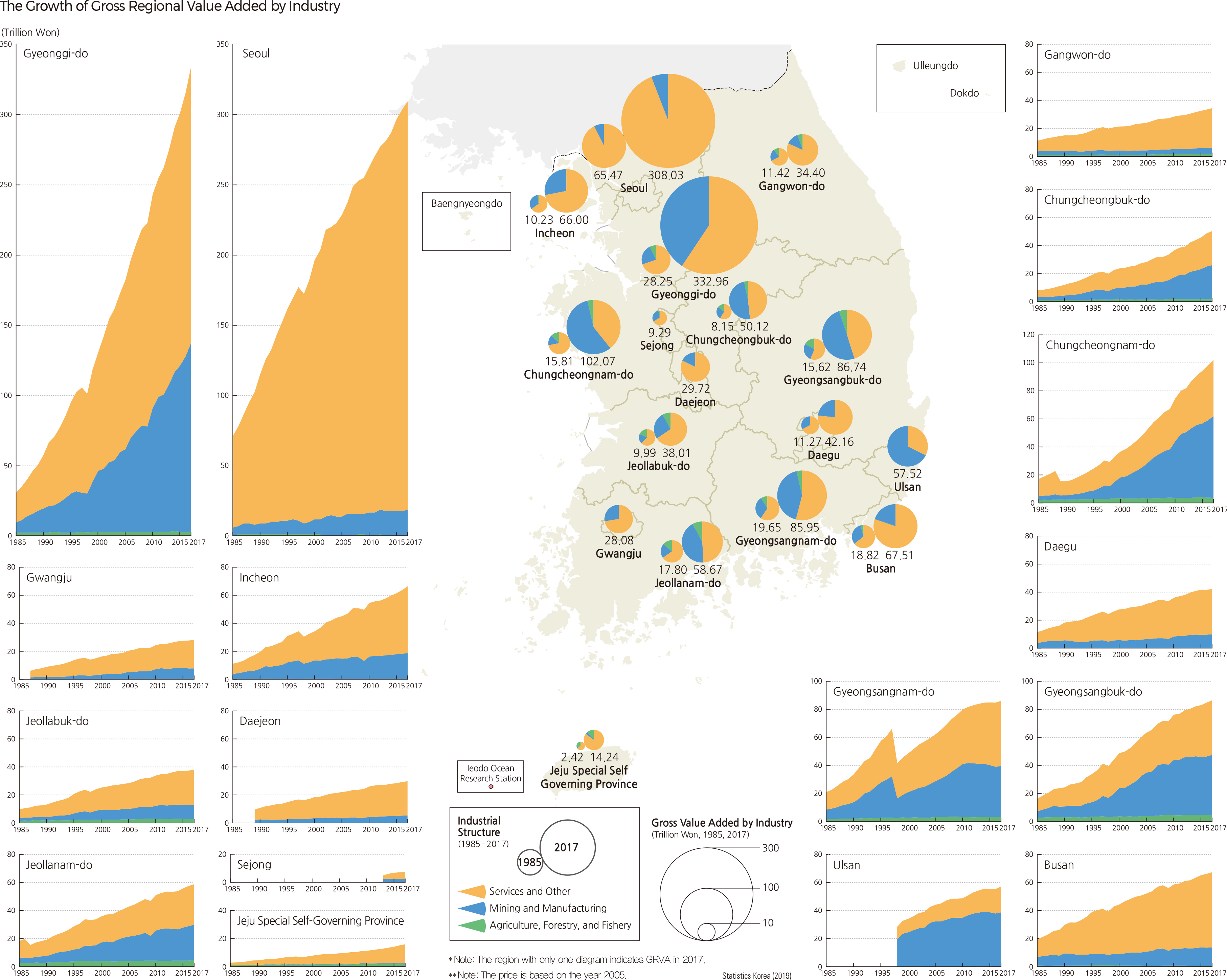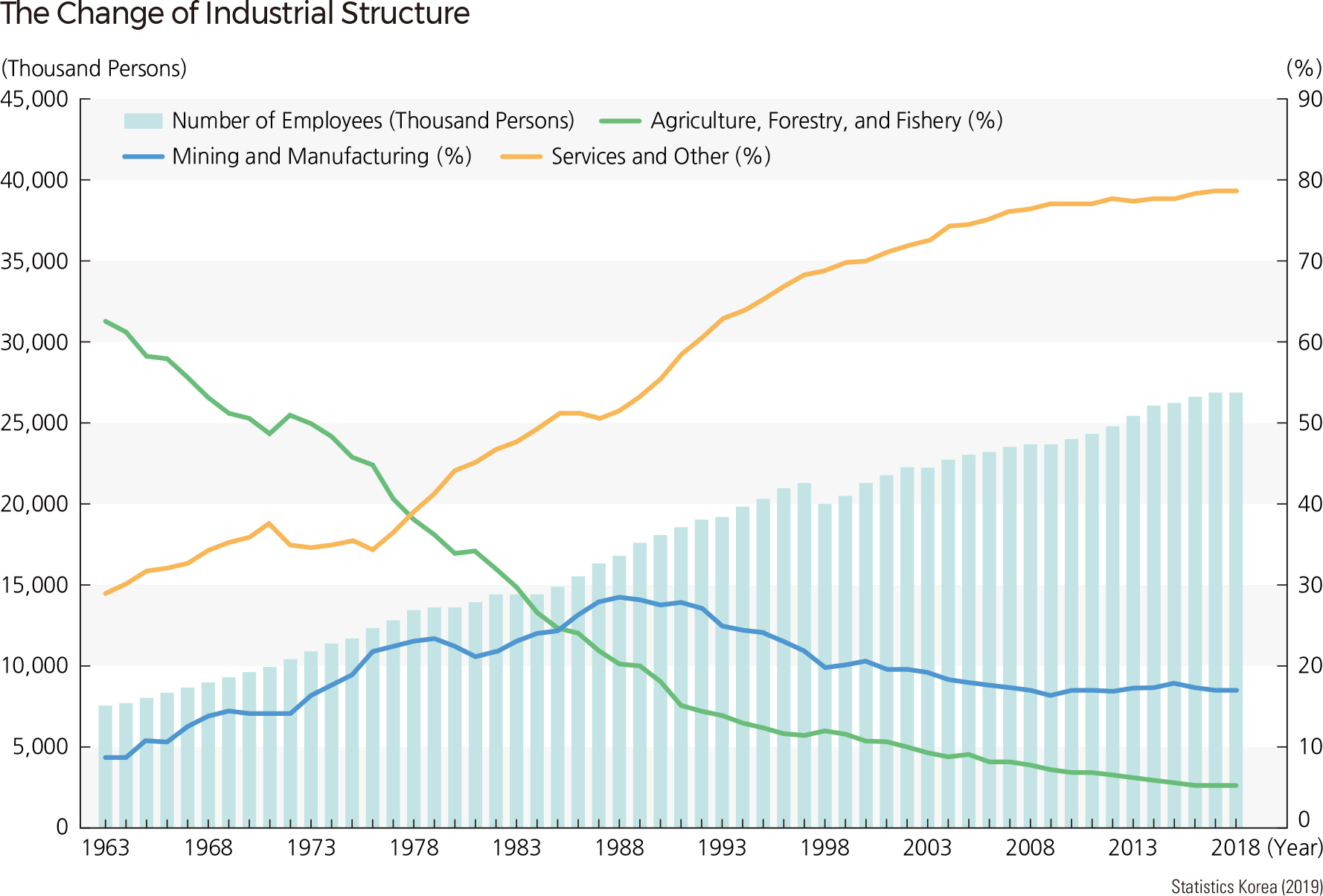English I 2019
Changes in industrial structure are usually assessed by reviewing changes in the share of agriculture, forestry, fishery, mining, manufacturing, service, and other industries. Korea’s industrial structure rapidly shifted from primary to secondary and tertiary industries. The number of employees in each industry proves to be an excellent indicator of the changes in industrial structure. Since the 1960s, the agriculture, forestry, fishery, and mining industries in Korea have suffered a steady decrease in employment while manufacturing, service, and other industries increased. Similar patterns of decrease in agriculture along with a concordant increase in manufacturing have also occurred in other countries, but what is unique about Korea’s changing employment pattern is that it happened very rapidly. Even advanced countries went through such changes but saw their transformation unfold over hundreds of years. Korea, on the other hand, underwent this dramatic shift in about 30 years. As such, Korea’s industrialization can truly be characterized as rapid and compressed economic growth.
To examine the industrial structure of each city and province between 1985 and 2017, one must review the changes in total value. In all regions, the total value added grew for 32 years. Rapid growth was seen especially in Gyeonggi-Do, which overtook Seoul in 2014. In all regions, the agriculture, forestry, and fishery share decreased, and metropolitan areas showed a decrease in manufacturing and an increase in service and other industries. |


